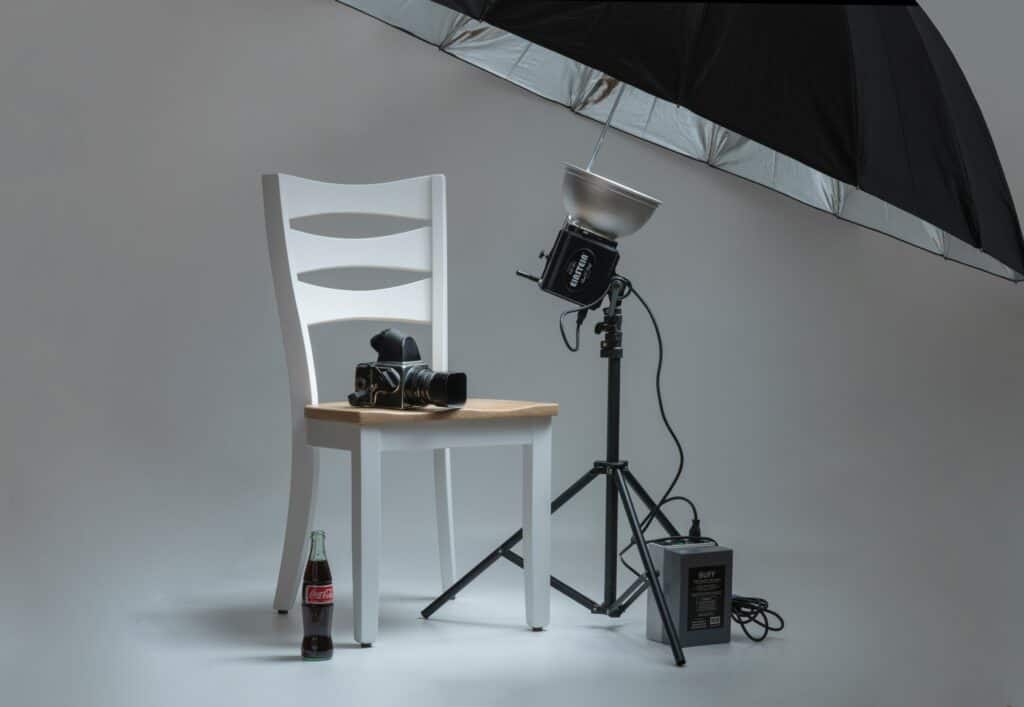There are so many different types of studio lighting- from strobes and softboxes, to LED strips and spotlights. One of the more commonly seen studio lighting are photography umbrellas, prominently featured in film, television, and behind-the-scenes photographs of celebrity photo shoots. Photography umbrellas are a portable, efficient, and an inexpensive way to produce beautiful images.
Here is our guide on how to set up and use photography umbrellas!
What is a Photography Umbrella?
To layman eyes, a photography umbrella looks like a regular rain umbrella. But they’re really not. A photography umbrella is a type of light modifier. A light modifier is an accessory or tool that changes how the light passes through it.
The specific kind of light modifier than an umbrella falls under is called a diffuser. A diffuser softens the light that hits it or goes through it. All diffusers create a larger light source, spreading the light out over a larger area. This softens the light, otherwise known as, makes sure the light doesn’t have a hard edge to it (like a spot light might have).
Umbrellas help create images that look like they were shot with natural light as you cannot see the hard light of a flash, strobe, speedlight, or lightbulb. A flash, strobe, and speedlight are devices used in photography that burst a powerful bright light, while a lightbulb is continuous light (always stays on and doesn’t flash).
Different Types of Photography Umbrellas
Not all photography umbrellas are created equal. There are many different kinds of them, but here are the primary types you’ll come across.
Shoot Through Umbrella
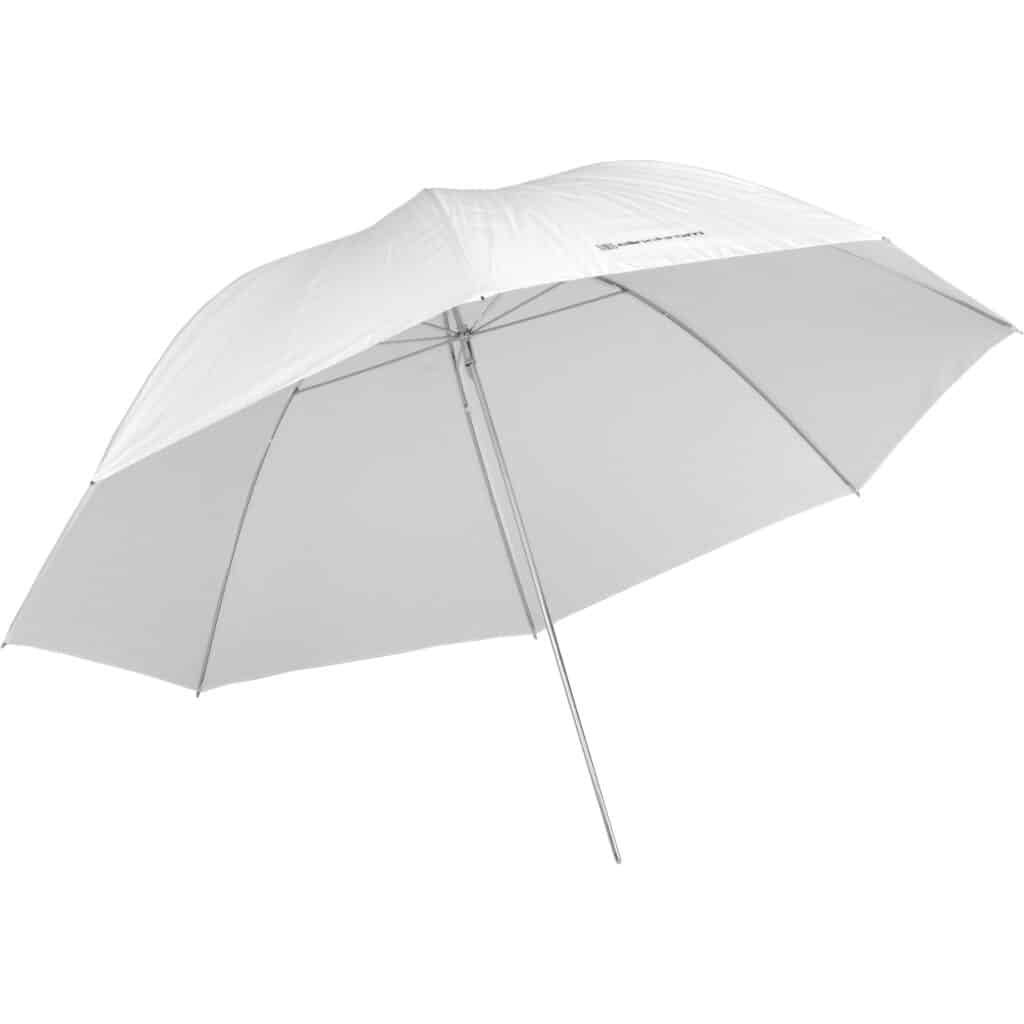
As the name implies, shoot through umbrellas are the ones in which you aim the light source at the umbrella and expect it to pass through. When it passes through, the light softens. Shoot through umbrellas are white in color and made of a moderately translucent material.
Aiming a light source toward a shoot through umbrella results in a broader and softer light. You would place the shoot through umbrella fairly close to your subject, with the top of the umbrella aimed at your subject. You want the light to pass through the fabric.
Silver Reflective Umbrella
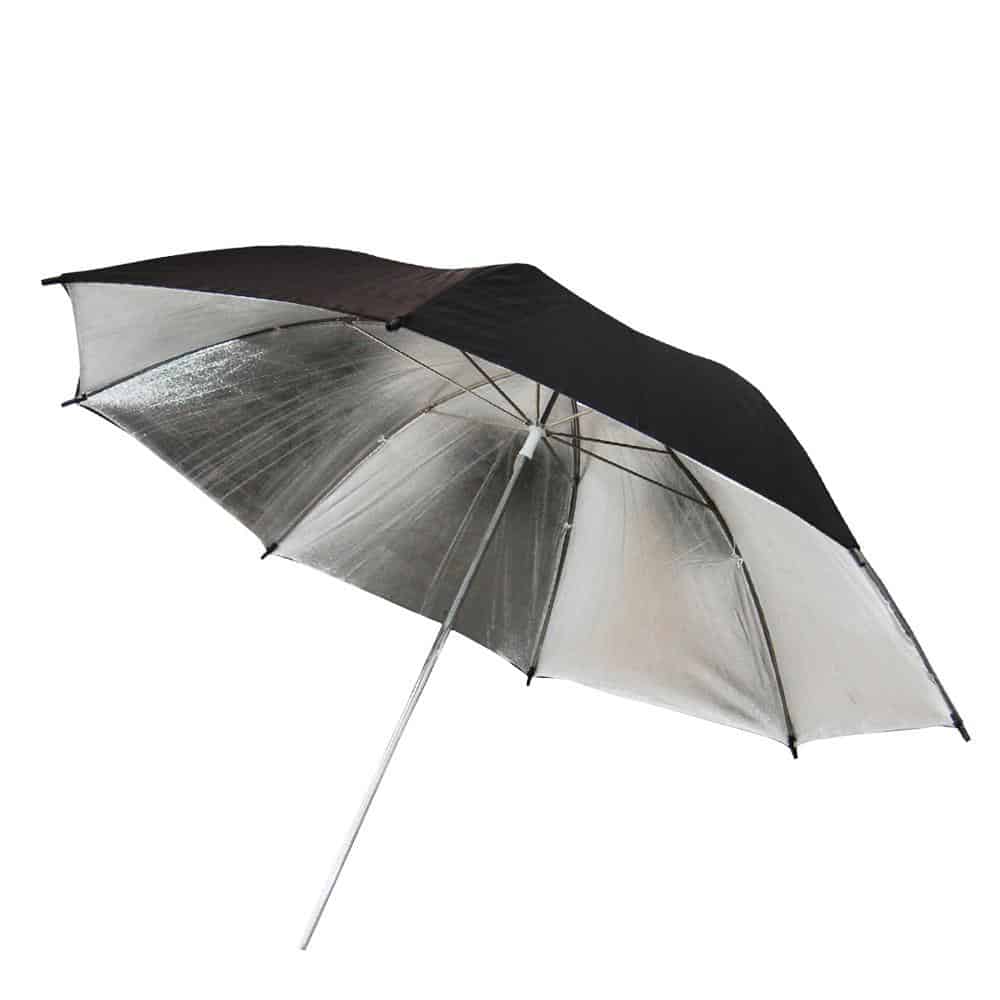
Now, unlike shoot through umbrellas, reflective umbrellas are opaque and don’t let light pass through them. These umbrellas are black on the outside and reflexive on the inside.
Silver reflective umbrellas bounce and redirect light around. A reflector does not illuminate, it merely allows you to manipulate the light that you already have. Reflective umbrellas tend not to spread the light quite as wide and are more centered rather than spread.
When using reflective umbrellas, photographers point their light source away from their subject into the umbrella to reflect light back onto the subject. You would point the open inside part of the umbrella at your subject.
A silver reflective umbrella creates a crisp and more edgy look, often seen in high fashion photography. These umbrellas are perfect for creating dramatic portraits with cooler tones.
White Reflective Umbrella
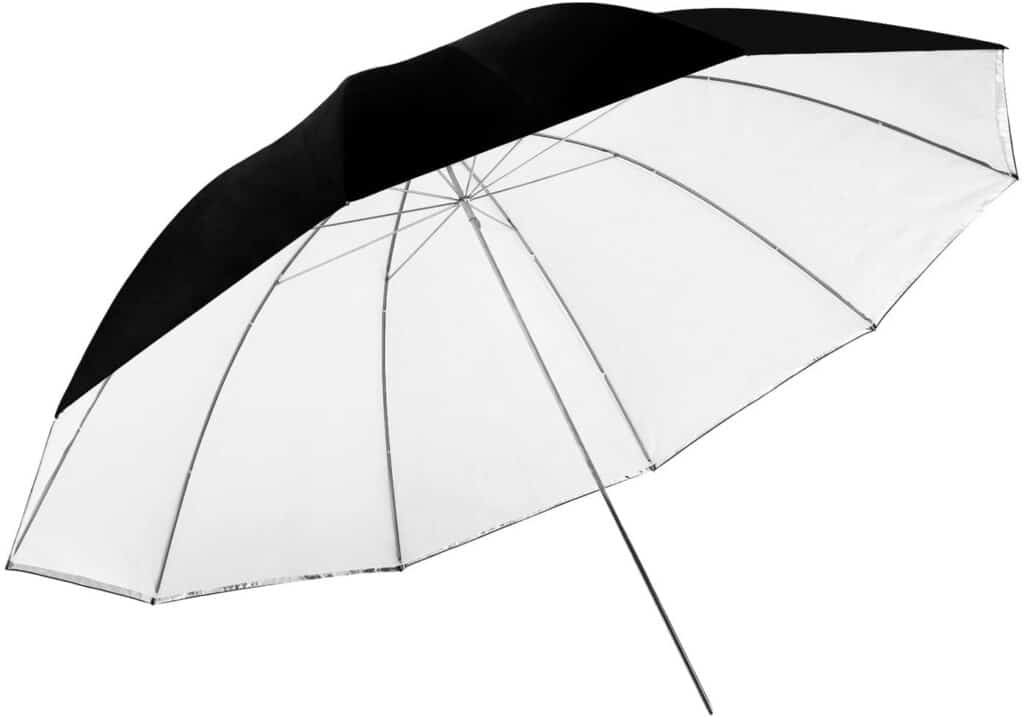
White reflective umbrellas have the same description as silver reflective umbrellas, but happen to be white on the inside rather than a shiny silver. A white reflective umbrella is almost like a hybrid between the shoot through and the reflective, as the result is soft (like a shoot through) but very direct (like a silver reflective). White umbrellas are ideal for photographers who want a light that is less dramatic and neutral.
Convertible Umbrella
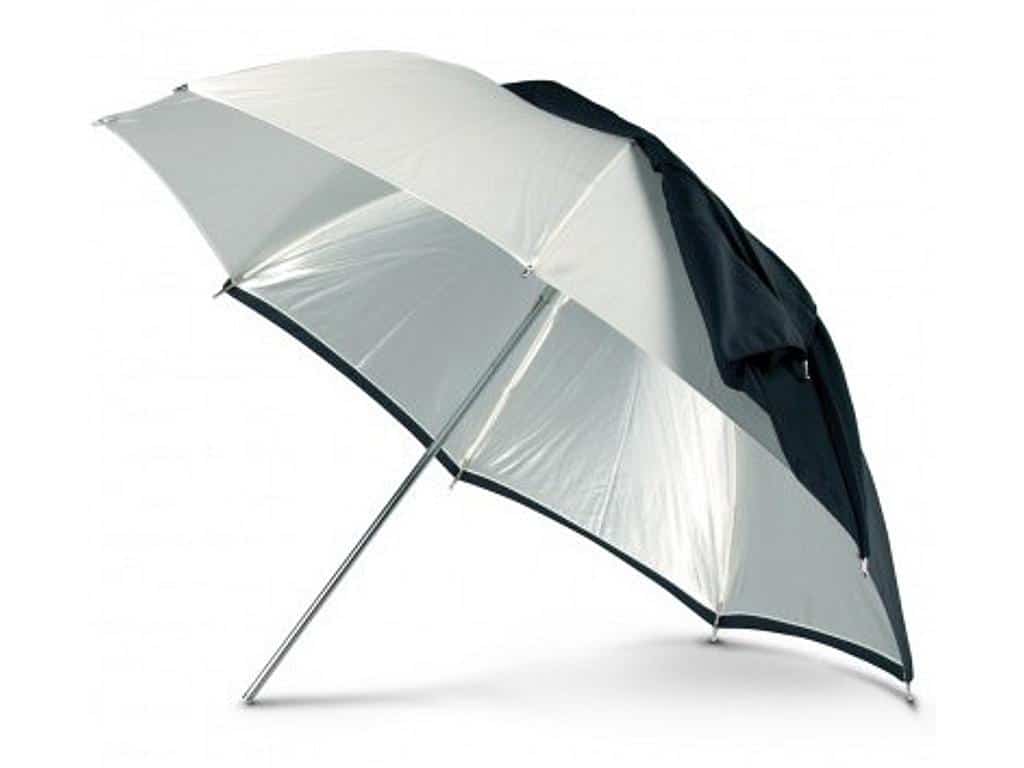
If you’re looking to stretch the budget or are a photographer who needs to quickly adapt to different situations, a convertible umbrella may be a great choice for you! A convertible umbrella is a white diffusion umbrella with a removable black cover. You can turn it into a shoot through umbrella or keep it as a white reflective umbrella.
How To Choose the Right Umbrella For Your Photo Shoot
What umbrella do you need? Well, it depends on what you’re wanting to shoot and how you want the final image to look!
Umbrellas come in different sizes. The larger the size, the more the light spreads, but the more powerful your light source has to be to illuminate the larger umbrella. The smaller the umbrella, the more direct the light is, and the less power you will need.
Large umbrellas are best for big groups of people. Medium umbrellas are great for individuals. Small umbrellas are excellent for product photography. Generally, a good middle ground is a 30 inch umbrella.
Because umbrellas are light, make sure you have them secured sturdy! Using sandbags or weights on your tripod can ensure your umbrella and light source don’t tip over and break.
How To Set Up a Photography Umbrella

Setting up a photography umbrella is relatively simple and easy! That is another reason so many photographers fancy this light modifier. All you need is the umbrella, a light source (whether it be a bulb or flash), tripod, and something to secure the umbrella, light, and tripod.
First, grab a tripod and screw on the mounting attachment, often called a Bracket. This attachment will specify whether or not it has an Umbrella Holder, and the top will have either a hot shoe or grip for a flash or bulb.
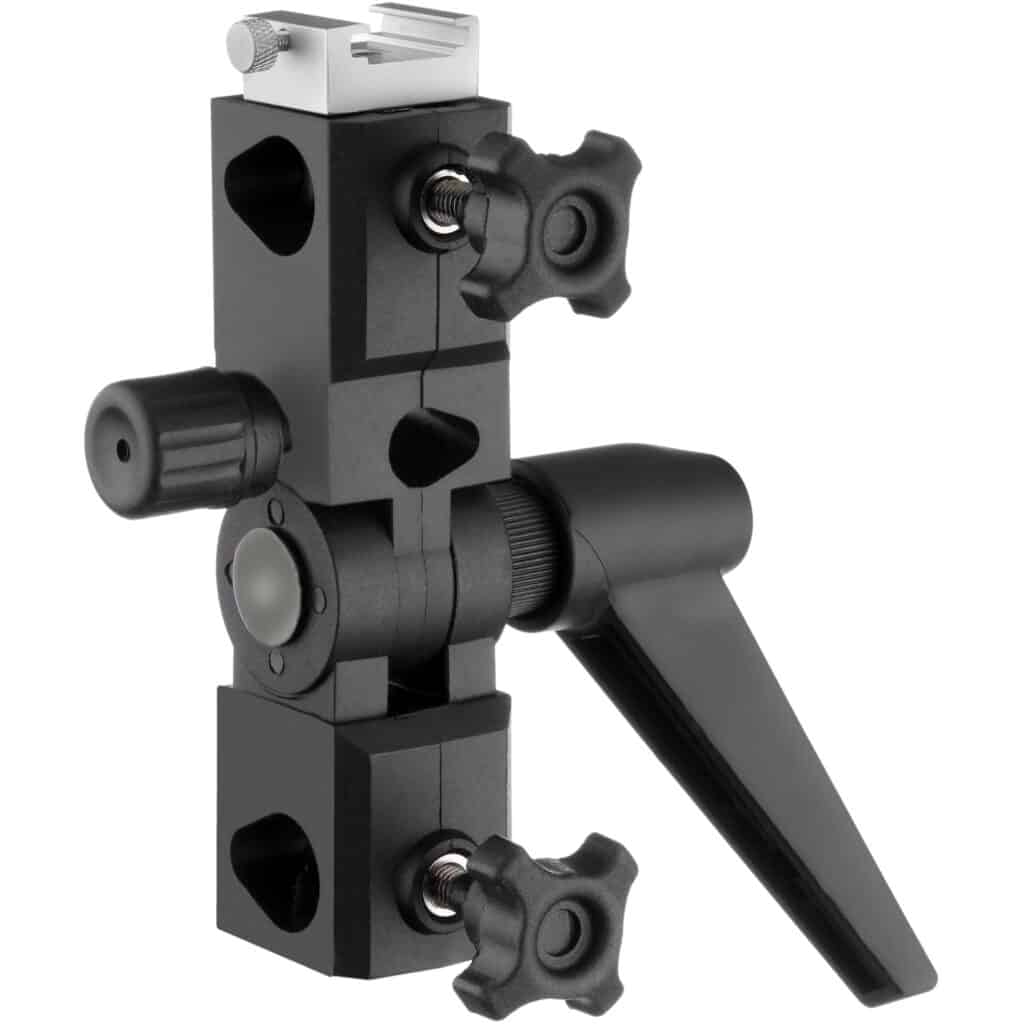
The umbrella holder is a hole in the center of the bracket. Photography umbrellas come with a long stick that attaches to this hole, but we will get to that in a moment. After screwing on the attachment, put some sandbags down on the tripod legs to prevent it from moving or tipping over.
Next, you can either attach your light source first or put the umbrella on first. I prefer attaching the umbrella first.
Go ahead and slide the umbrella handle into the umbrella holder hole. It should have a knob at the side to tighten it in place. Then go ahead and place the light. Pay attention to how close you place the light to the umbrella. If you place the flash or bulb up close to the umbrella, the light will be too close to fill the entire umbrella. Play around with the distance to see what works best.
That’s it!
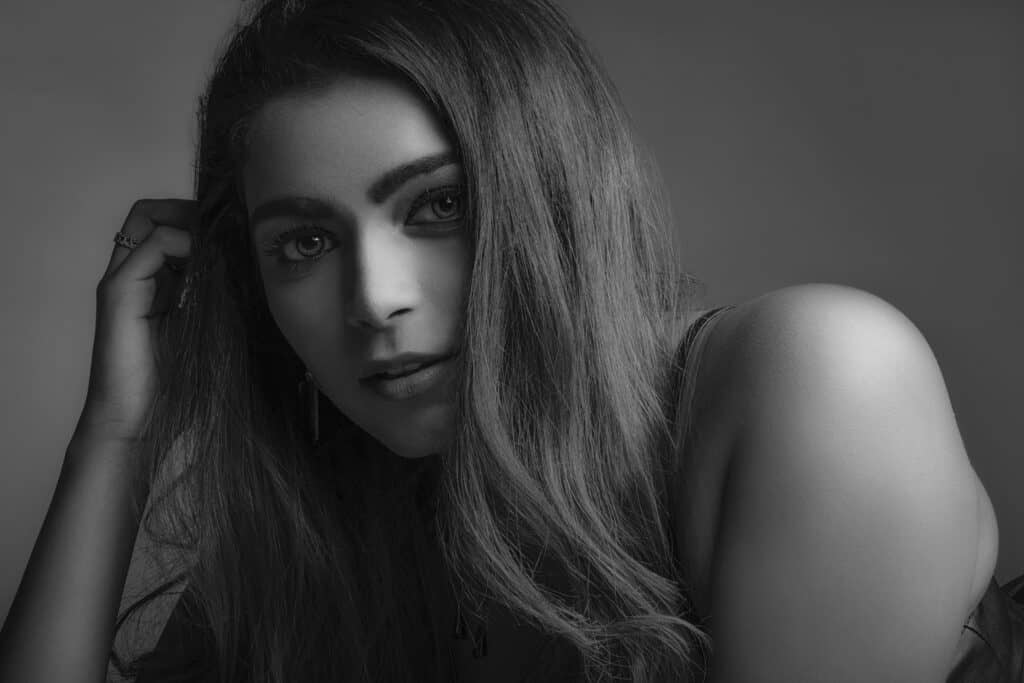
As to how to arrange it, photographers commonly place an umbrella or two at a 45 degree angle to the side of their subject, for a soft light look. This can create a rembrandt look.
For beauty lighting, try placing the umbrella in front of your subject but above your camera! This is often called Butterfly Lighting.
For separation between the subject and the background, you can do the triangle arrangement with three umbrellas. Place one umbrella in front of your subject, and two umbrellas behind the subject on either side. Aim all of the umbrellas towards the subject.
Keep experimenting with different arrangements and see what works best for you!
Conclusion
In conclusion, every photographer should have some umbrellas around to create beautiful studio images! Which one is best for you depends on your aesthetic and needs.
